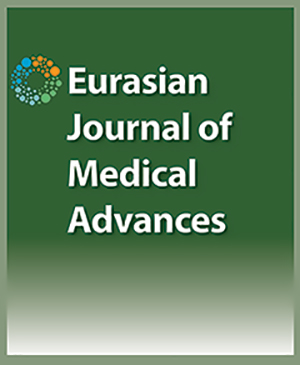

Serum Hepcidin: An Atherosclerotic Biomarker in Rheumatoid Arthritis Patients: A multicenter Case-Control Study
Emad El Shebiny1, Sabry Shoeib2, Sawsan M. Moeen3, Eman Badr4, Fatemah Elshabacy5, Eman Meiz6, Enas Zahran11Internal medicine, Rheumatology& Immunology, Faculty of Medicine – Menoufia University, Egypt, 2Internal Medicine & Hematology, Faculty of Medicine – Menoufia University, Egypt Internal Medicine & Hematology, Faculty of Medicine – Menoufia University, Egypt, 3Internal Medicine & Hematology, Faculty of Medicine – Menoufia University, Egypt, 4Department of Internal Medicine, Clinical Hematology Unit, Faculty of Medicine, Assiut University, Assiut, Egypt, 5Department of Medical Biochemistry and Molecular Biology, Faculty of Medicine – Menoufia University, Egypt, 6Department of Rheumatology Rehabilitation Benha Teaching Hospital Kalyoubia, Egypt,
Objectives: Hepcidin, a major regulator of iron metabolism and homeostasis. Studies on hepcidin in rheumatoid ar thritis (RA) are still inconsistent. Aim to identify if hepcidin could add to diagnosis of RA associated complications, especially atherosclerosis. Methods: A case-control study involved measurement of serum hepcidin levels in patients and control by Enzyme linked immunosorbent assay, and assessment of Carotid intima Media thickness (CIMT) by Doppler ultrasonography. Patients’ clinical manifestations, comorbidities, and treatment were recorded. The disease activity score-28 (DAS28) was used to evaluate RA activity. Results: This study enrolled 50 RA patients and 25 control subjects, with predominantly female participants (98%). Hepcidin is significantly increased in RA patients when compared to control (p<0.001). Right and Left Carotid intima media thickness showed significant difference between patients and control (p=0.016 & p=0.006). In multivariate lin ear regression models hepcidin showed significant positive correlation with BMI, CRP, CIMT (p<0.001). Hepcidin level ?298.5 showed significant AUC that could discriminate between patients. Conclusion: Increased hepcidin level in RA patients was correlated with CIMT (r=0.676). Patient Age, RA duration, cho lesterol level and hepcidin level were linked to an increase in CIMT in RA patients. Therefore, serum hepcidin level could be a predictor of atherosclerosis in RA patients. Keywords: Atherosclerosis, CIMT, Hepcidin, Rheumatoid arthritis, Rheumatoid factor
Cite This Article
Shebiny E, Shoeib S, Moeen S, Badr E, Elshabacy F, Meiz E, et al. Serum Hepcidin: An Atherosclerotic Biomarker in Rheumatoid Arthritis Patients: A multicenter Case-Control Study. EJMO. 2024; 8(2): 165-172
Corresponding Author: Sabry Shoeib



